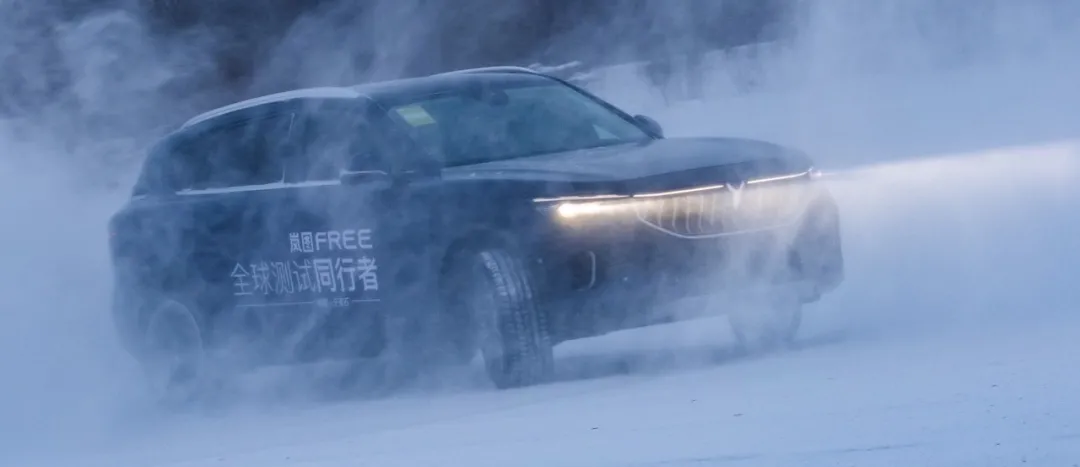In December of last year, the Voyah FREE was unveiled in Shenzhen for the first time.
In the following months, I often received various inquiries about this car: Is it a range-extended electric car? How reliable is the range extender? How is the interior space? What about the autonomous driving ability? How is the configuration? Is the battery safe? Is it worth buying?
Indeed, many people are curious. Standing at the turning point of transformation, Dongfeng Motor, with a history of fifty years, will sketch out what kind of Voyah. Can the “new strength” of the Voyah FREE support its not low selling price?
Maybe the answer will be revealed soon.
On March 31st, the price of the Voyah FREE will be officially announced, and deposit reservations will be opened. Consumers are about to vote with their feet. Therefore, in today’s new forces and traditional car companies with abundant product choices in the terminal market, Voyah must answer a soul-searching question:
Why should I buy a Voyah FREE?
Choice
In my opinion, the Voyah FREE gives users the “maximum choice.”
As a new energy product positioning itself as a “large smart electric SUV with zero anxiety,” the biggest feature of the Voyah FREE is that it provides users with two power solutions at the same time: the range-extended version and the pure electric version.
According to the information released by Voyah, the pure electric version of the Voyah FREE has a comprehensive NEDC range of 505 km, a 0-100 km/h acceleration of 4.7 seconds, and supports home charging and fast charging. The range-extended version has a comprehensive NEDC range of 860 km, a 0-100 km/h acceleration of 4.5 seconds, and can be powered by both oil and electricity, with four energy-supplying forms: 11 kW home charging, DC fast charging, portable on-board charging gun, and 92# gasoline energy supplement.
Compared with other brands’ 7.2 kW, the 11 kW home charging pile can save about 2 hours of charging time.
DC fast charging: faster charging and shorter charging time. The battery can be charged from 20% to 80% in only 45 minutes, and can be charged for 200 km in 30 minutes.
Portable on-board charging gun: equipped with a portable charging gun, the vehicle can be charged by connecting to 220V household power supply without a charging pile.
92# gasoline energy supplement: In extreme situations where charging energy is inconvenient, the range-extended version of the Voyah FREE can also be powered by gasoline energy supplement. 92# gasoline is more economical than high-grade fuel.Frankly speaking, it is relatively complex to develop different power systems, pure electric and range extender, based on the same product. It requires more time and energy from the team. The reason why Voyah strives to overcome the difficulty is simple: user orientation.
Voyah FREE pure electric version and range extender version respectively correspond to two user groups:
Firstly, if you have an independent parking space at home and can install a charging station, the daily usage scenarios are mostly in urban areas, such as commuting to work and weekend gatherings with friends, etc. Therefore, a pure electric version is suitable since it can meet the above usage scenarios. It is more convenient to charge at home every night, with lower refueling costs than gasoline.
Secondly, if you do not have a charging condition at home or any other gasoline car, a range extender version is particularly suitable as the only or main vehicle for the family. Because if charging is not convenient, refueling is enough, and there are chargers in some places, which can be charged while shopping on weekends, without wasting time to refuel. It will help you avoid range anxiety and make you more free.
Considering that the home charging conditions of most users in first and second-tier cities are relatively limited, Voyah FREE range extender version is likely to become the tip of the spear in Voyah’s brand sales.
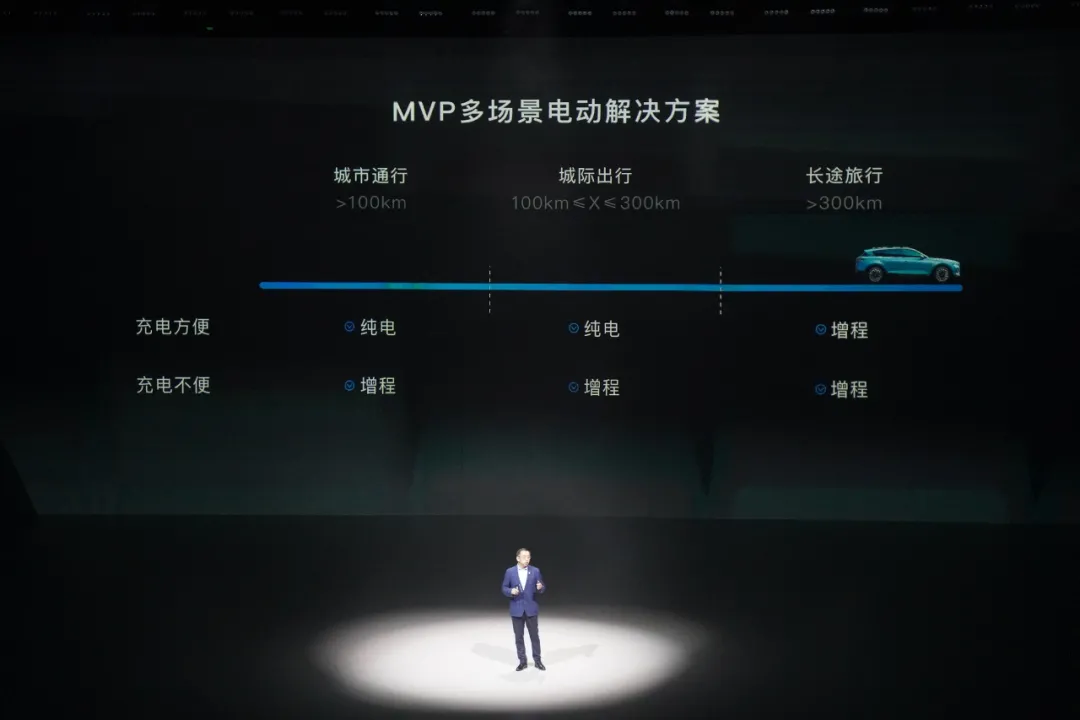
For a long time, there was a lot of controversy over “range extender mode” in the market.
Technically speaking, the range extender power system is more complicated since it is a system that generates electricity by burning fuel with an engine and then drives the vehicle through an electric motor. Before Voyah, Ideal ONE was a product that raised the banner of “range extender technology,” which was heavily criticized. It was not only criticized by many car critics, but even Volkswagen China CEO Feng Sihan publicly expressed that the range extender is a “very bad and outdated technology.”
But interestingly, as the only large and medium-sized SUV with a range extender on the market, Ideal ONE has stayed atop China’s domestic new energy SUV sales chart for several months. Why is that?
The reason remains the same, it is user-oriented.
Technology is ultimately for serving people. Do consumers care about the technology itself? Of course not. What consumers care about is the experience that technology brings, whether it is good or bad. Just like many people don’t like three-cylinder engines, not because they don’t like the technology itself, but because of the vibration caused by three cylinders; many people like longitudinal rear-wheel drive, not because they like the technology itself, but because of the strong driving force and good handling that they can directly perceive.
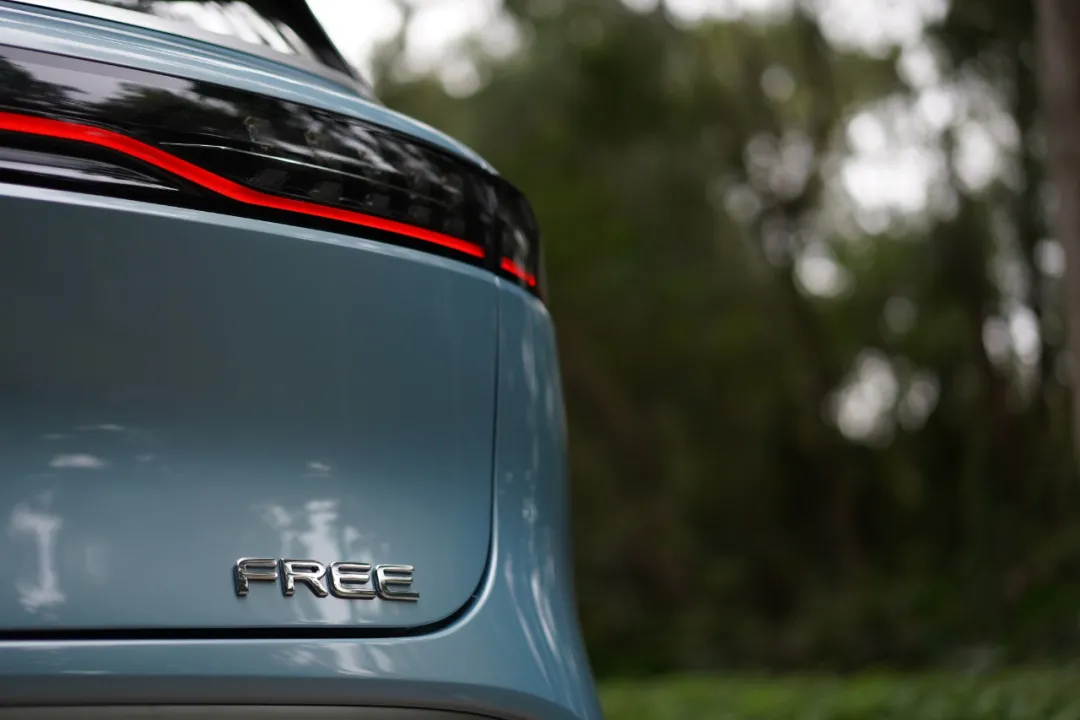
From the user’s perspective, the logic of choosing a range extender electric vehicle product is simple:
Firstly, why not buy a pure electric car?Because extended range vehicles don’t have range anxiety, even though I may never drive to Tibet in my lifetime, I want a zero range anxiety car that allows me to just go and be more free.
Secondly, why not buy a gas car? Because the driving experience of extended range products is more similar to that of pure electric vehicles, with fast acceleration and relative quietness. If you want to buy a gasoline car with a similar driving experience, the budget would need to be doubled. If you have a charging station at home, then the usage cost is also comparable to that of a pure electric car. In addition, if you are in a city with license plate restrictions like Shanghai, extended range products can be classified as new energy vehicles, allowing you to obtain a green license plate for free and enjoy the same road rights as pure electrics.
It is worth noting that the extended-range version of the Voyah FREE also has a noticeable difference: its configuration is hard-core. For example, the extender uses a “1.5T + four-cylinder” engine. It should be noted that the current weakness of extended range products is noise and vibration in low-power mode, and the “1.5T + four-cylinder” can optimize this weakness in hardware and bring better NVH performance. According to Voyah’s actual tests, the lowest SOC at which the extender in energy-saving mode is activated is 21%. Under this mode, the redundant battery power can still provide high power output for the vehicle, and with the high-power extender, the vehicle can still achieve good power performance.
According to official information, in order to achieve better performance under balanced battery status, the Voyah extender team conducted nearly 10 rounds of scheme evaluation and refinement based on the original plan, and the maximum power generation was increased to 80 kW, achieving a 10% power generation increase from the original plan. At the same time, the VCU and testing and verification departments conducted a lot of tuning work, including bench calibration, consistency testing, and emissions verification to further reduce fuel consumption by 2% on the basis of the original plan.
In addition, there is one very important point for users: the extended range version of the Voyah FREE uses a “33-degree battery pack + 56L fuel tank” combination. In real-world usage scenarios, if you can install a charging station at home, the NEDC 140KM pure electric cruising range brought by the 33-degree battery pack is enough to meet daily urban transportation needs. If it is a long-distance driving scenario and charging conditions are not so convenient, the larger 56L fuel tank allows users to not have to frequently go to refueling stations for energy replenishment and travel will be more convenient. In addition, the advantage of the light weight of the 33-degree battery pack can also make the Voyah FREE more fuel-efficient and powerful in high-speed driving.The configuration of the “1.5T + four-cylinder” turbocharger can reflect the attitude of the Voyah FREE: try to satisfy users and provide the best. Voyah FREE has indeed put a lot of effort into product configuration.
Here are some simple examples:
First, in terms of configurations directly related to the user’s driving experience, Voyah FREE is equipped with front and rear dual motors with the highest comprehensive power of 510kW and peak torque of 1040N·m. This is comparable to supercar-level power and torque. Voyah FREE’s pure electric version accelerates from 0 to 100 km/h in 4.7 seconds, while the extended-range version accelerates in 4.5 seconds.
In addition, Voyah FREE is equipped with more comfortable and smoother front double-wishbone independent suspension and rear multi-link independent suspension, as well as air suspension. According to official information, Voyah FREE’s anti-roll performance and shock absorption measures, actual comfort levels even exceed those of Audi Q5L.
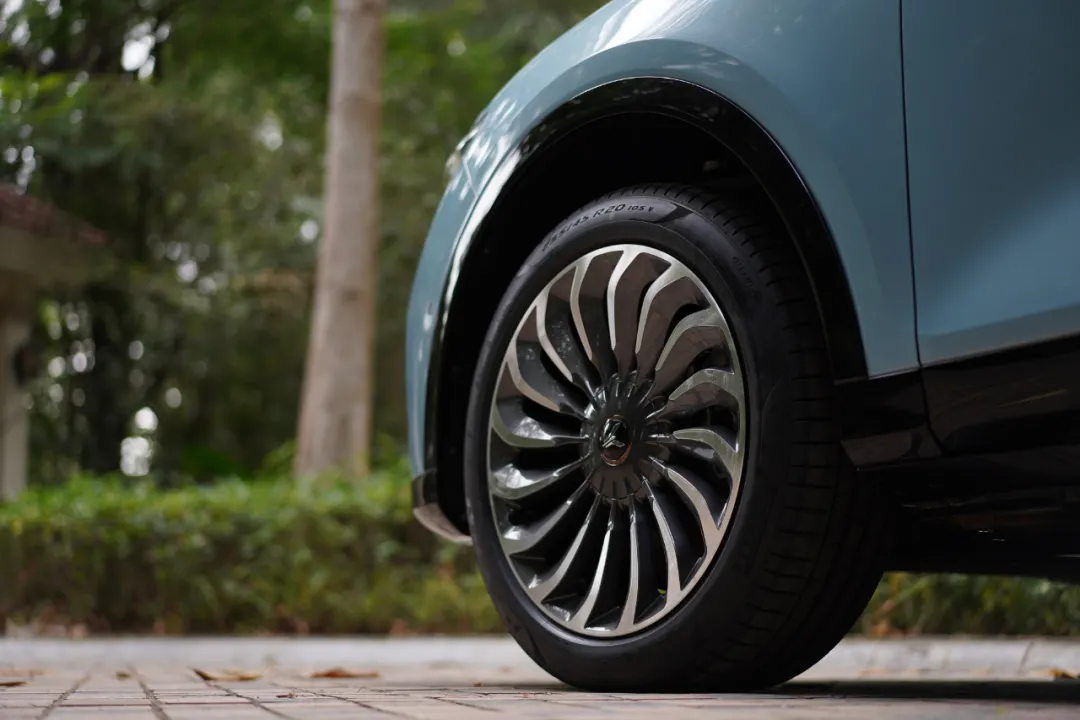
Second, in terms of configurations related to the user’s in-car experience and comfort, as a medium to large-sized five-seat car, Voyah FREE has a length of 4905mm and a wheelbase of 2960mm, making the interior space very spacious. In addition, it is equipped with 12-way electrically adjustable memory seats that can be ventilated, heated, and massaged, as well as a Danac sound system with 10 speakers throughout the car, with sound effects that can be intelligently adjusted. This sound system also has an active noise-reduction function, which is interesting. This car also uses smart adjustable light panoramic sunroof, which can adjust the brightness in multiple levels.
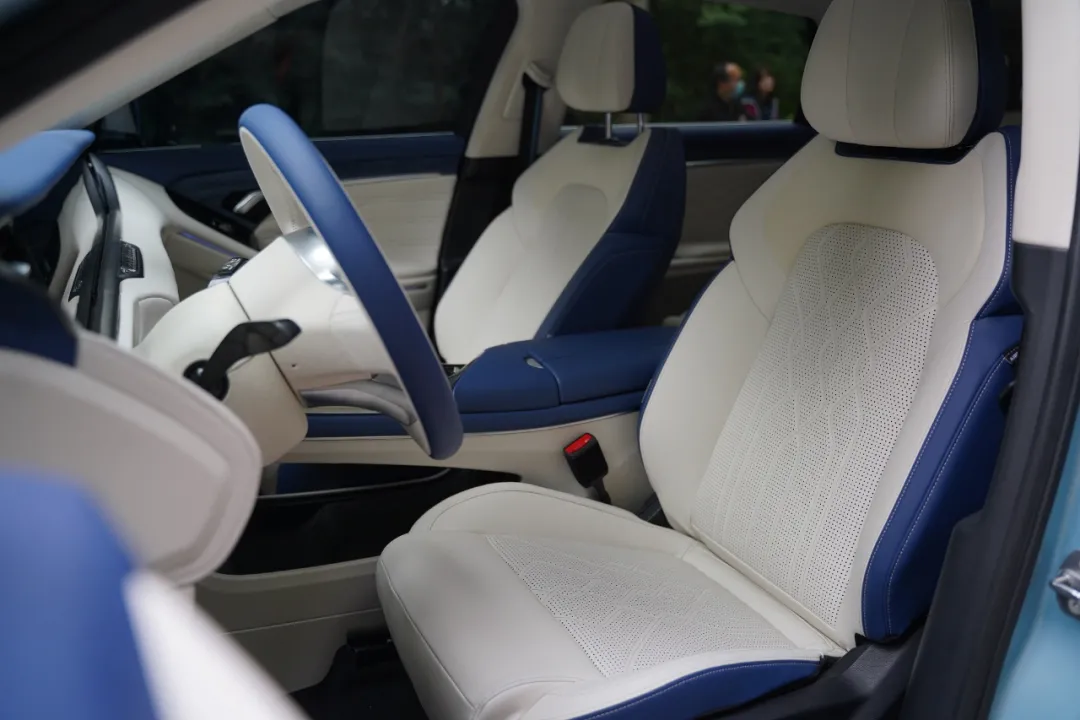
Third, in terms of technological configurations that improve the driving experience, Voyah FREE is equipped with AR real-life navigation and night vision driving system, which has active night vision, 150m ultra-long range, and AI recognition warning functions. In addition, Voyah FREE is also equipped with the world’s first car-standard 5G T-BOX, which can complete OTA software packages that took 1 hour for 4G vehicle machines in just a few minutes.
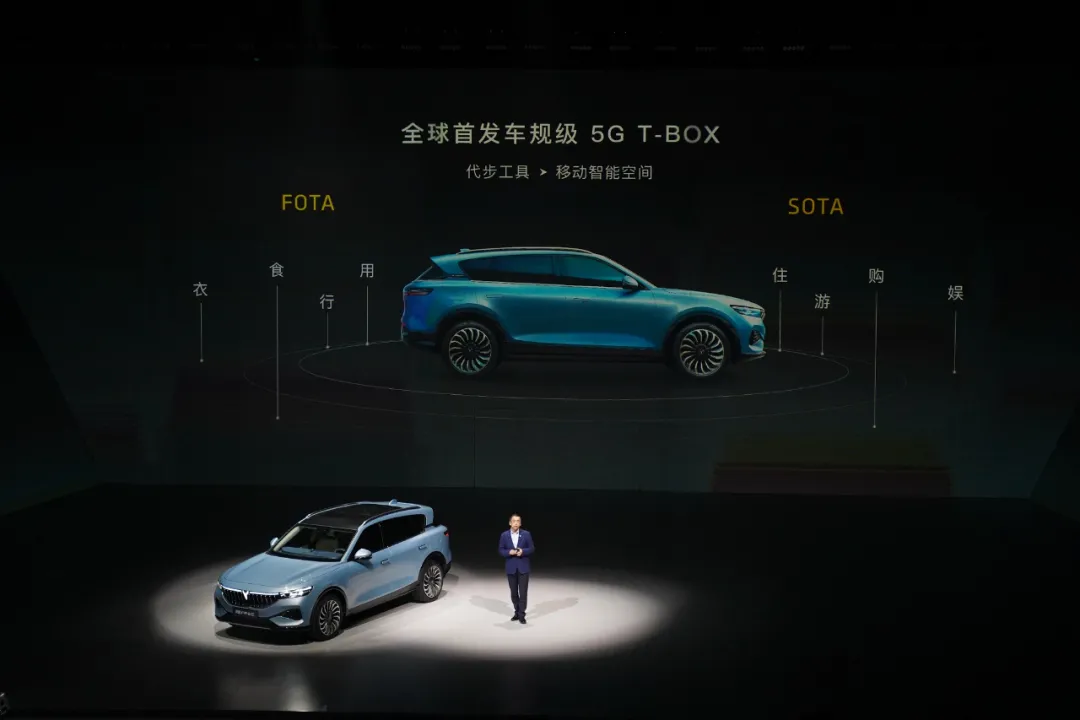
It is worth noting that Voyah FREE can achieve whole-car OTA, including FOTA and SOTA upgrades.
FOTA refers to whole-car upgrades: all systems including the core system of the car can be upgraded, such as intelligent driving, intelligent cockpit, and chassis. For example, intelligent driving functional upgrades, intelligent cockpit voice updates, and accuracy optimization, air suspension experience upgrades, and so on.# SOTA refers to software upgrades, which means that systems other than the core system of the car can be upgraded. These include the UI of the infotainment system, navigation maps, media software, and entertainment software, etc., enabling vehicles to always maintain the latest version of the application software and provide users with a better experience.

For users, the role of intelligent driving functions will become more and more important in future travels. The Voyah FREE has a total of 24 intelligent sensors, including 3 millimeter-wave radars, 9 cameras, and 12 ultrasonic radars. This hardware configuration is very advanced and is still very leading in the same type of products. They also provide a hardware foundation for OTA upgrades in the subsequent assisted driving field.
In terms of functionality, this advanced intelligent driving assistance system can achieve 20 intelligent driving assistance functions, including ACC full-speed adaptive cruise, LKA lane-keeping assist, AEB automatic braking, 360° panoramic image, BSD blind spot monitoring, and fatigue driving monitoring and warning.
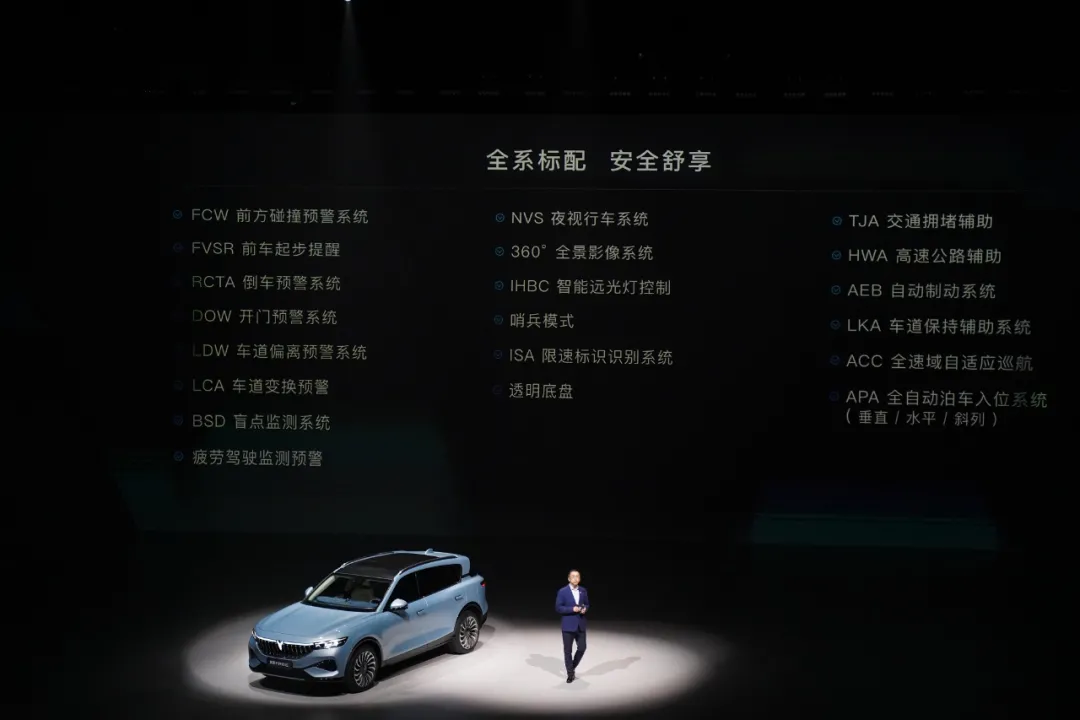
However, in my opinion, these are not the essence of the Voyah FREE configuration.
Because when you sit in the car, the most eye-catching thing must be the innovative car “three-in-one screen that can be raised and lowered as a whole.”
This globally first three-in-one screen that can be raised and lowered as a whole will rise and the ambient light will light up when the user starts the car, like a person getting up to greet you, with a strong sense of ceremony. Previously, the Voyah team told me that this screen uses a magnesium-aluminum lifting mechanism. Compared with a split three-in-one screen, the one-piece design is 30% more expensive.
In order to create this three-in-one screen that can be raised and lowered as a whole, they discussed and verified 16 different schemes and carried out more than 100 comprehensive selections of layouts, structures, and materials. Finally, they chose to use the LTPS+In-cell fully fit form, which not only makes the screen have better contrast, narrow bezels, and visual beauty, but also ensures that this screen can be raised and lowered at least 30,000 times.
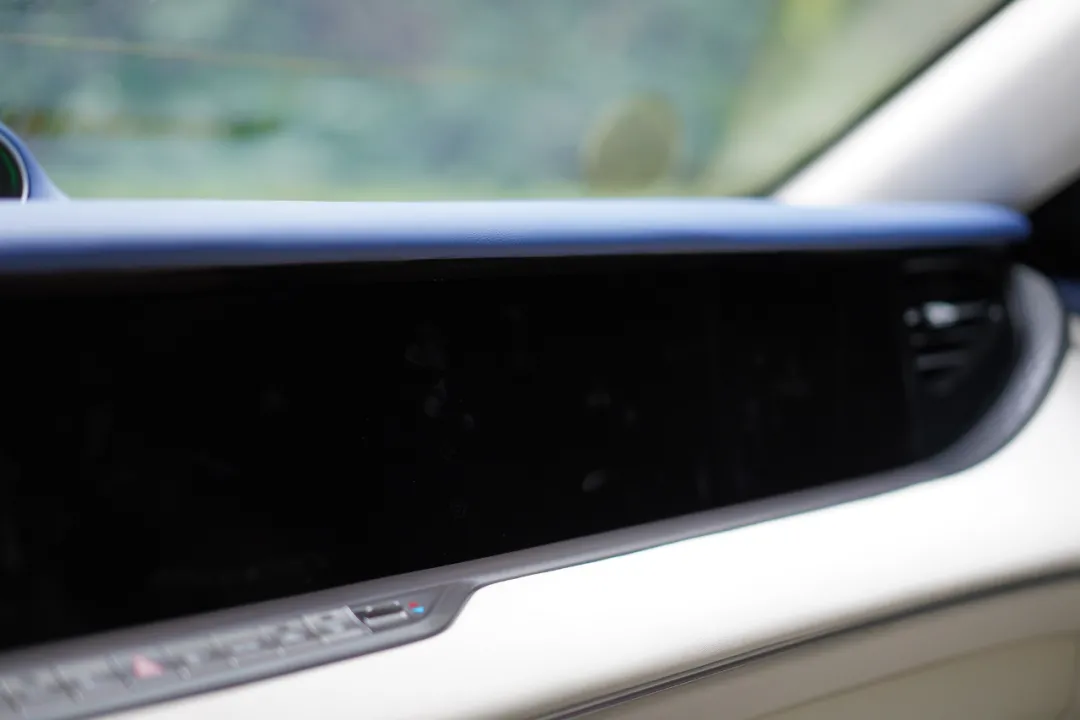
Interestingly, in addition to reasonably allocating navigation, music, entertainment, and control functions, and supporting gesture control, this three-in-one screen will also “transform” with the entire vehicle status.Currently, VOYAH FREE offers four driving modes: VOYAH Moment, VOYAH Performance, VOYAH Attention, and VOYAH Care. The central computing platform’s electrical architecture based on SOA automatically adjusts the tri-screen and other in-car settings in all four modes.
For example, when the car is in VOYAH Performance mode, the integrated lift tri-screen automatically lowers, and the air suspension adapts to lower the car’s posture, bringing a sporty vibe. In VOYAH Care mode, the in-car camera automatically recognizes children, and the child lock automatically locks while intelligently matching appropriate temperature and volume levels to ensure the child’s safety when adults leave the car. If changed to VOYAH Attention mode, the system can perform light, medium, and severe fatigue driving warning through judging the user’s fatigue level, providing six warm reminders, including sound, image, air conditioning, fragrance, service station navigation, and instrument indicator lights, which can intelligently, actively, and three-dimensionally relieve driver fatigue.
Technology should never be cold, but should have warmth.
Overall, the comprehensive configuration of VOYAH FREE, including the invisible extender and chassis suspension, as well as visible tri-screen, adjustable skylight, and Denon sound, reflects the car’s “high configuration, high comfort” advantage among products in the same class.
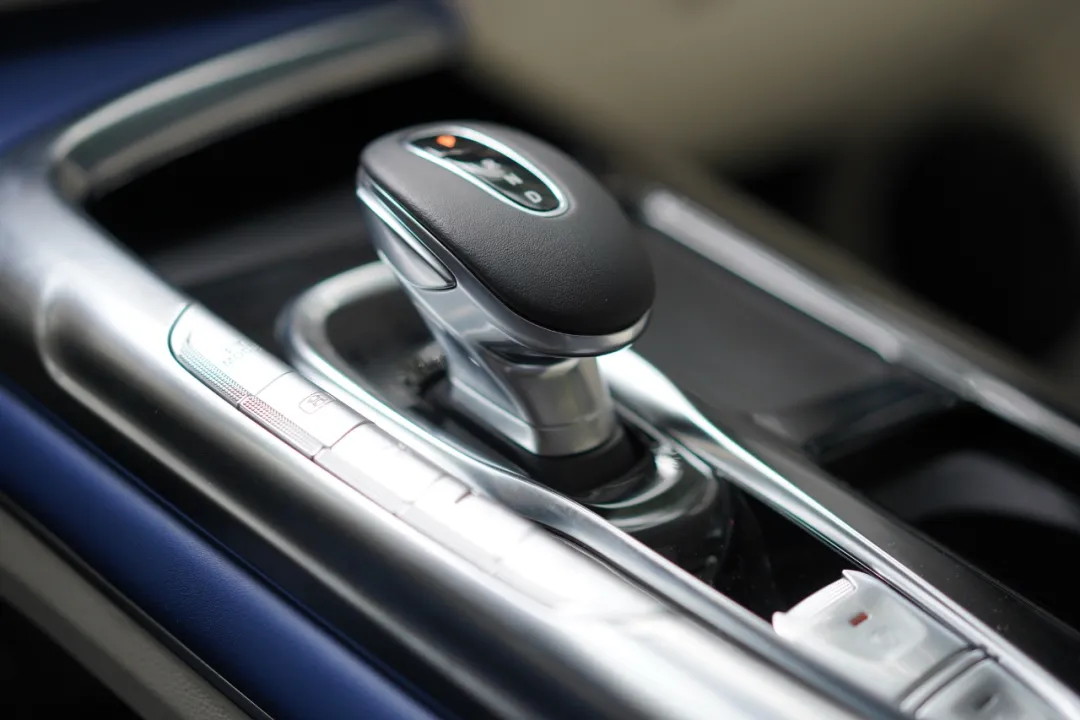
Background
Is there any reason to choose VOYAH FREE besides its user-oriented product concept and configuration?
Of course, because visible features such as dual-path selection of range-extender batteries or the lift tri-screen may not be the reason to buy. In contrast, the invisible features of VOYAH FREE may solidify the user’s purchase decision.
As we all know, VOYAH was incubated by Dongfeng Motor Corporation in Wuhan.
Dongfeng Motor Corporation is the business card of the automotive industry in Wuhan with a history of fifty years. Its determination to embark on a new journey is unquestionable. Standing on the giants’ shoulders, whether it is starting from 0 or 1 for VOYAH, it is interpreted according to one’s understanding and perception.
Unlike many new brands that need to consider a series of key words such as “quality, safety, manufacturing, supply chain, technology, capital, qualifications, and sustainability,” most of these invisible thresholds have been resolved on VOYAH.
From a product perspective, continuing tradition has its benefits. For example, safety is the top concern for users.
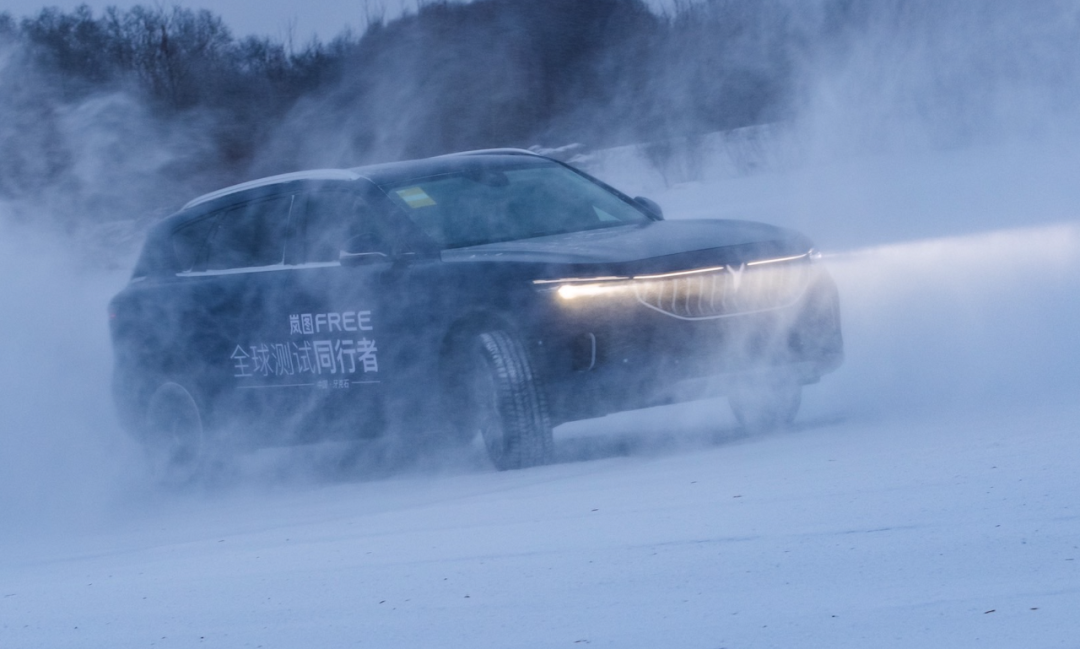 The issue of battery safety is of great concern to electric vehicle users. The Voyah team has designed a 5-layer structure reinforcement for the Voyah FREE battery pack from the cell, module, and PACK levels. In addition, they have conducted over 100 safety tests, including collision and water immersion.
The issue of battery safety is of great concern to electric vehicle users. The Voyah team has designed a 5-layer structure reinforcement for the Voyah FREE battery pack from the cell, module, and PACK levels. In addition, they have conducted over 100 safety tests, including collision and water immersion.
It is worth noting that the Voyah FREE battery pack also uses a three-dimensional thermal insulation wall and a super-strong high molecular insulation and flame retardant material to individually wrap each cell in a full 3D manner. The three-dimensional thermal insulation wall forms an efficient thermal insulation and flame retardant protective layer between cells, and each cell is fully wrapped in thermal insulation and flame-retardant materials, resembling “amber.”
Reportedly, the Voyah battery pack surpasses the national standard by achieving “smokeless, fireless, and explosionless” and maintains its “three not” status even after being stationary for 50 days, setting a new industry safety record.
In addition, Voyah FREE’s white body uses TRB+Patch composite structure thermoforming technology for the A-pillar, TRB aluminum-silicon coating thermoforming materials for the B-pillar, and the first use of a 2000MPa aluminum-silicon coating material for the door anti-collision beam. According to official data, high-strength steel accounts for 75% of the white body, with over 31% being thermoformed steel with a strength of 1500MPa or higher.
These invisible details reflect Voyah’s car-making heritage and original intentions, as well as its synergy with the “new backbone force” user group it seeks to attract, which demand innovation, creation, and quality adherence.
Finally, a small matter to note. In the product launch event of the Voyah FREE last December, several user representatives were in the center position for the final group photo, while the Voyah core management stood on both sides. It was a detail that reflected Voyah’s brand’s heartfelt dedication from the top down. With strength and care, Voyah is likely to go far and bring Voyah FREE closer to users. Interestingly, just two days ago, after the first Voyah center opened for business, a friend of mine visited the flagship store in Beijing. He had previously seen many of the new car companies’ products, including range-extended models like the ideal ONE and pure electric products like the NIO ES8. That afternoon he told me that he was seriously considering buying the Voyah FREE.
This article is a translation by ChatGPT of a Chinese report from 42HOW. If you have any questions about it, please email bd@42how.com.
